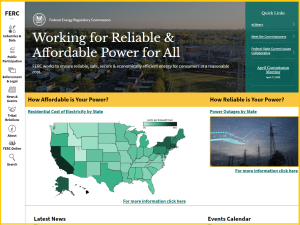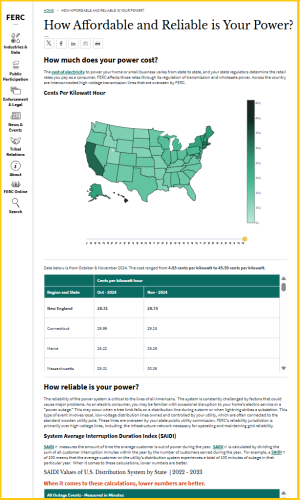The Federal Energy Regulatory Commission announced new updates and features to its website that focus on the cost consumers pay for power as well as how reliable that power is.
“My priority at FERC is to work to ensure reliable power at the least cost. That is exactly why I want to highlight this critical information right on our website – because FERC’s work, impacts all Americans.”
– FERC Chairman Mark Christie
Visitors to FERC.gov will be able to see the retail cost of electricity by state and the amount of time and the number of times they are without power during a year. The source for the data is the U.S. Energy Information Administration (EIA).
Learn More:
Cost of Your Power
On the left, the map provides you with the retail cost of power by state. The darker the color, the higher the cost. The cost of electricity to power your home or small business varies from state to state, and your state regulators determine the retail rates you pay as a consumer. FERC affects those rates through its regulation of transmission and wholesale power. Across the country are interconnected high-voltage transmission lines that are overseen by FERC.
Reliability of Your Power
Also on the page you will find the reliability of your power by region and state. Lower numbers are better. As an electric consumer, you may be familiar with occasional disruption to your home’s electric service or a “power outage.” This may occur when a tree limb falls on a distribution line during a storm or when lightning strikes a substation. This type of event involves local, low-voltage distribution lines owned and controlled by your utility, which are often connected to the standard wooden utility pole. These lines are overseen by your state public utility commission. FERC’s reliability jurisdiction is primarily over high-voltage lines, including the infrastructure network necessary for operating and maintaining grid reliability.


